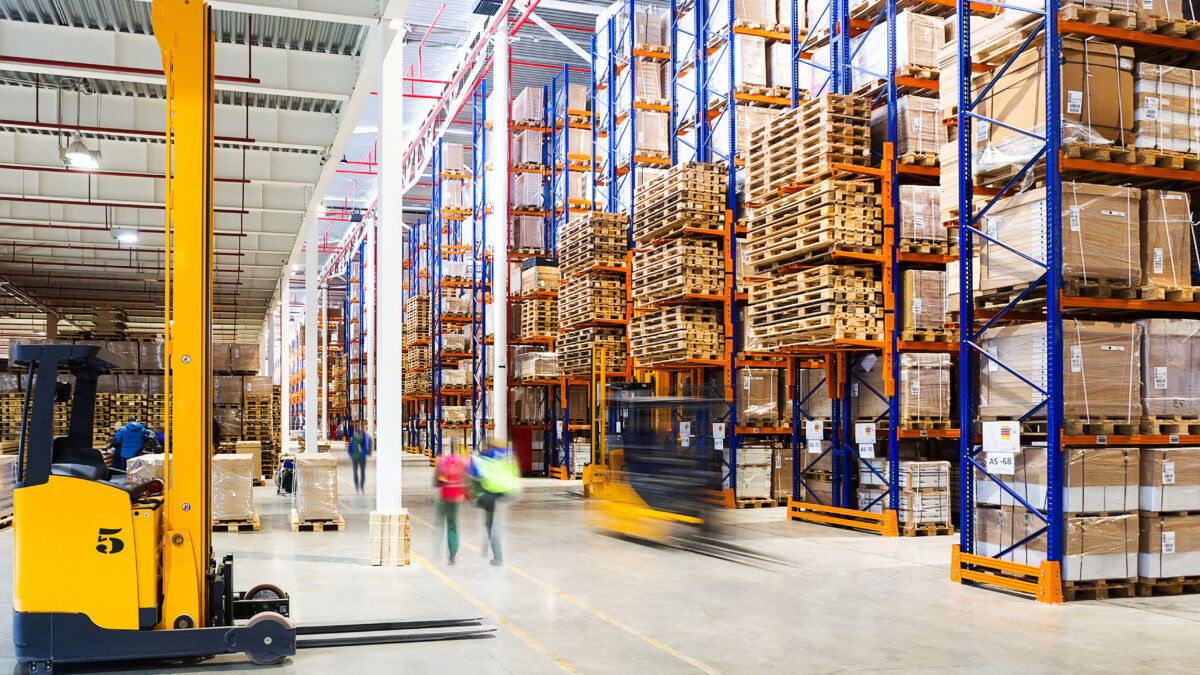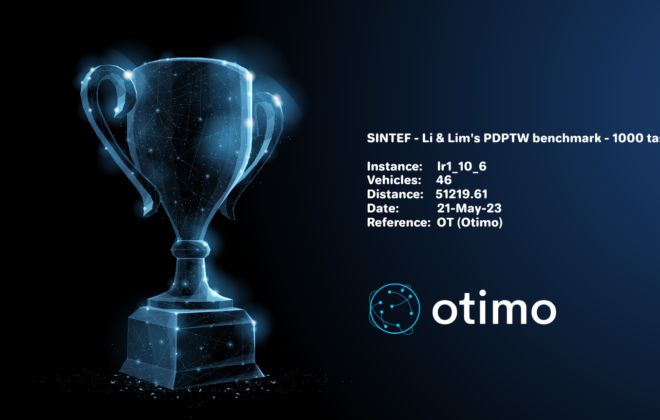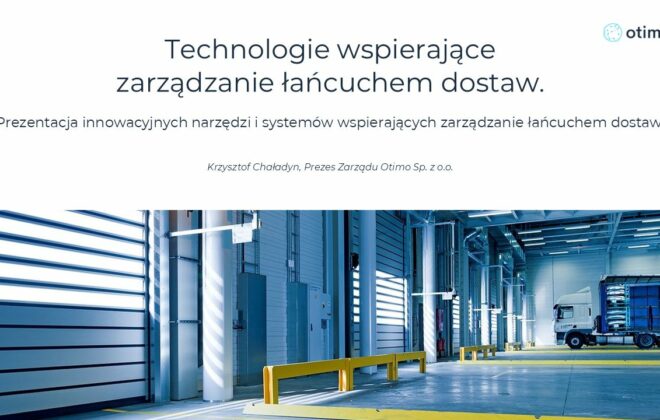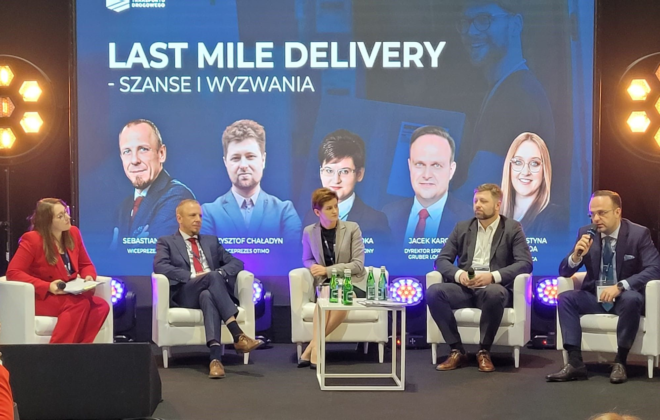Logistics and order fulfillment – trends 2025
“Delivery for yesterday? We're working on it.” – this joke in the world of logistics stops being funny and starts to sound like a realistic forecast. The year 2025 brings further revolutions in order fulfillment - from warehouses managed by robots, which in turn are controlled by AI, to deliveries made within a few hours. What trends will dominate logistics in the coming year? Do consumers really need even faster deliveries, or is it time for sustainable and smart logistics? Let's check what awaits the industry and why both warehouses and the "last mile" are becoming the arena of the greatest innovations.
The rise of automation and robotics
We’ve been hearing about robotics and automation transforming warehouses for years now, but now the momentum is stronger than ever. Today, robotic picking solutions can handle up to 1,000 picks per hour—a massive leap compared to the 250–350 picks per hour typically done by human workers. By 2025, an estimated 4 million warehouse robots are expected to be installed across 50,000 warehouses worldwide. And according to a study by Interact Analysis, 26% of warehouses are projected to have automation implemented by 2027, up significantly from just 18% at the end of 2021.
AI-powered forecasting and data-driven decision-making
Knowing when to expect a surge in demand or a drop in sales can make a big difference in how a warehouse runs. Warehouses that use this kind of technology are seeing huge benefits. Take Amazon, for example. Their AI-powered forecasting tools look at customer behavior, past data, and market trends to predict when demand will rise or fall. This helps them manage inventory better, cut storage costs, and restock on time, giving them a big advantage in efficiency and keeping customers happy.

Sustainable and green logistics
Sustainability will no longer be a differentiator, it will be an expectation. Consumers are demanding transparency across the entire product lifecycle, from sourcing to delivery. Brands that invest in sustainable fulfilment practices, such as green delivery options and transparent supply chains, will gain a competitive advantage while contributing to a better planet. Green strategies include: biodegradable packaging, carbon-neutral shipping options, circular logistics systems that reuse materials. Investment in sustainable fulfillment practices isn’t just good for the planet – it’s also good for business. According to a recent study by Capgemini, 73% of consumers are more likely to support brands that prioritize sustainability. Companies are also exploring renewable energy solutions, such as solar-powered warehouses and electric delivery fleets, to minimize their environmental impact. In 2025, we’ll see more companies integrating these principles into their operations to meet regulatory requirements and consumer expectations.
Rise of q-commerce and micro-hubs
Order today, delivered tomorrow? That’s a thing of the past. According to a McKinsey study, same-day and instant delivery services are projected to account for a combined market share of 20% to 25% in 2025, with 41% of consumers willing to pay extra for same-day delivery.With consumers becoming more and more tied to their phones, brands are ultimately competing for screen time. However, if consumers encounter the dreaded ‘long delivery time’ at checkout, 46% are likely to abandon their cart.
Personalization in fulfillment
Personalisation (now, fueled by AI) doesn’t stop at product recommendations, it extends to fulfilment. Retailers can ensure that the personalised experience is carried through to how and when customers receive their orders, enabling intelligent inventory allocation and dynamic delivery options. According to a report by PWC, 83% of online shoppers are more likely to share their information and receive a more personalized customer experience. Aspects like flexible delivery windows, parcellockers, and branded inserts have all been experimented with by many major retailers and warehouses. Best buy, n American consumer electronics retailer, implemented a scheduled delivery service, offering specific days and 2-hour windows that customers can choose from.
Omnichannel fulfillment strategy
In 2025, the lines between online and offline shopping will continue to blur. Customers will expect to shop seamlessly across different platforms, and businesses need an omnichannel fulfillment strategy to meet these expectations. An omnichannel approach allows businesses to fulfill orders from both online channels and physical stores. An omnichannel fulfillment strategy offers flexibility and convenience to customers while optimizing inventory management and fulfillment efficiency. It ensures that businesses can quickly fulfill orders, regardless of whether they are placed online or in-store.
Cross-border logistics
As e-commerce expands globally, businesses must be prepared to handle international fulfillment and cross-border logistics. In 2025, expanding into new markets will require efficient and cost-effective shipping solutions to ensure timely delivery and avoid costly customs issues. For businesses looking to streamline their operations, outsourcing e-commerce fulfillment can be a strategic option to ensure scalability and efficiency. Global e-commerce growth has led to more customers expecting international shipping options. Businesses that can offer quick and reliable cross-border delivery will have a competitive advantage, while those that fail to do so may lose customers to global competitors
Rise of third-party logistics (3PL) providers
Operating a fulfillment center requires a complex infrastructure of software and technology. Rather than host and maintain their own environment in-house, many organizations find it more efficient and cost-effective to source their operations to a third-party logistics (3PL) provider. The 3PL market share is projected to grow from 1.29 trillion USD in 2024 to 1.68 trillion USD in 2029 with a Compound Annual Growth Rate (CAGR) of 5.48% over the projected period, indicating that 3PL implementation will only increase in years to come.
To sum it up, logistics and order fulfillment in 2025 is not just about technology, but also about strategy - a race against time, customer expectations and resource constraints. Automation, AI and green logistics are changing the rules of the game, but one thing still remains key: flexibility. As Charles Darwin said, “It is not the strongest that survives, nor the most intelligent, but the one that responds best to change.”.
Can companies cope with the growing challenges? For sure! After all, if logistics can deliver a pizza in 30 minutes, it can also deliver the future on time.
###
Article by: Marcin Maroszek.
Sources:
- https://www.mckinsey.com/industries/travel-logistics-and-infrastructure/our-insights/how-customer-demands-are-reshaping-last-mile-delivery
- https://smart-robotics.io/2025-e-commerce-fulfillment-trends
- https://www.dhl.com/content/dam/dhl/local/global/dhl-ecommerce/documents/pdf/g0-dhl-e-commerce-trends-report-2024.pdf
- https://www.g2.com/articles/warehouse-automation-statistics
- https://www.founderjar.com/online-retail-statistics/
- https://www.the-sun.com/money/13065157/best-buy-launches-scheduled-delivery-holidays/
- https://www.capgemini.com/insights/expert-perspectives/sustainable-technology-a-competitive-advantage-for-businesses/
- https://cart.com/blog/build-a-sustainable-supply-chain
- https://www.logiwa.com/blog/outsourcing-inventory-management-to-3pl
- https://www.mordorintelligence.com/industry-reports/global-3pl-market
- https://www.logiwa.com/blog/8-fulfillment-trends-for-2025
- https://smart-robotics.io/2025-e-commerce-fulfillment-trends/
- https://ecommercegermany.com/blog/5-e-commerce-fulfillment-strategies-for-2025
- https://www.linkedin.com/pulse/future-e-commerce-fulfillment-trends-watch-uzhmc/
- https://cart.com/blog/2025-fulfillment-trends




